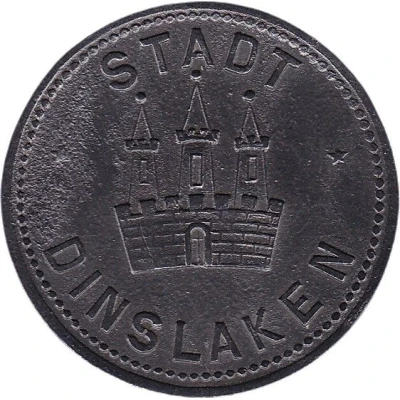


© gyoschak (CC BY-NC-SA)
50 Pfennigs - Dinslaken
1919 year| Zinc | 3 g | 23.7 mm |
| Issuer | City of Dinslaken (Prussian province of Rhine) |
|---|---|
| Period | Weimar Republic (1918-1933) |
| Type | Standard circulation coin |
| Year | 1919 |
| Value | 50 Pfennigs (50 Pfennige) (0.50) |
| Currency | Mark (1914-1924) |
| Composition | Zinc |
| Weight | 3 g |
| Diameter | 23.7 mm |
| Thickness | 1.3 mm |
| Shape | Round |
| Technique | Milled |
| Orientation | Medal alignment ↑↑ |
| Demonetized | Yes |
| Updated | 2024-10-04 |
| Numista | N#134817 |
|---|---|
| Rarity index | 85% |
Reverse
Pearl rim, legend top and bottom with denomination centered
Script: Latin
Lettering:
KRIEGSGELD 1919
50
★ PFENNIG ★
Edge
Plain
Comment
Issuing authority: [Stadt, Rheinprovinz]Interesting fact
One interesting fact about the 50 Pfennigs - Dinslaken 1919 coin is that it was issued during a time of economic turmoil in Germany, known as the "Inflationary Period" (1914-1923), when the value of the German mark plummeted, and the prices of goods and services skyrocketed. As a result, the government was forced to print more and more money to keep up with the inflation, leading to the creation of many different types of coins, including the 50 Pfennigs - Dinslaken 1919, which was made of zinc and had a relatively low denomination. Despite its low value, this coin is now a rare and sought-after collector's item, a testament to the turbulent economic times in which it was issued.